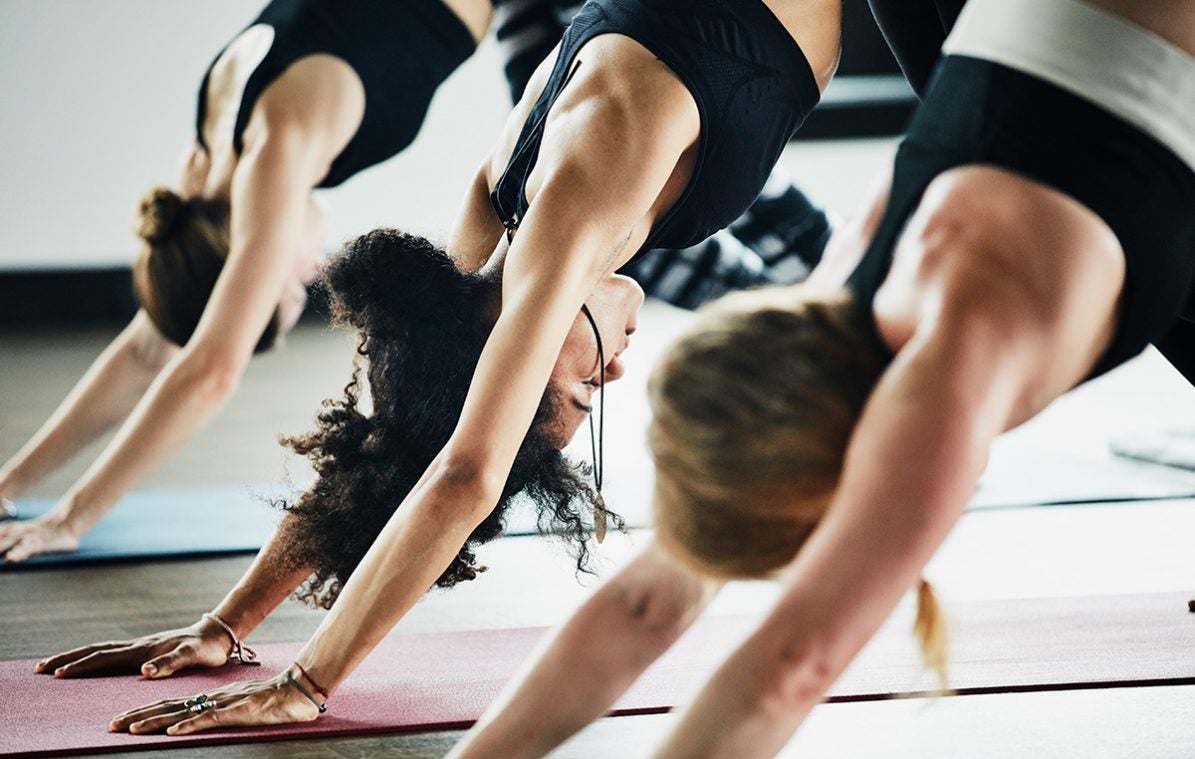7 Things I learned During my Yoga Teacher Training that You Should Start Doing
 Thomas Barwick
Thomas Barwick
I have always been drawn to the mixture of gentle yet challenging practice in yoga. The longer I did it, the more connected I was to myself as a result. No other physical activity I’ve ever tried puts my own perception so much in focus. I wanted to share this experience with others, so I decided to start teaching yoga myself.
The desire to become a yoga teacher really took hold of me while I was at university. I only ventured to take the right steps a couple of years later, and I’m very glad that I did. Everything I learned between then and now has enhanced my own practice and my day-to-day life. Do you want to know how? I’m eager to share my story too, and tell you 7 things that you can adopt and apply in your yoga practice.
And if you’ve never done any yoga before, my advice is to simply give it a try. You’ve got nothing to lose and you’ll be richer for the experience. Read on to find out everything you should know as a beginner at your first yoga class.
#1 Yoga is more than just asanas
Yoga poses, also known as asanas, are likely the first thing you’ll experience in a yoga class. Asana literally translates as “seat”, as yoga was traditionally performed sitting down. When I first started off, I focused on the body-oriented asanas and tried to master them as fully as possible. However, they’re not the main goal in yoga, but only a means to an end. Asanas are designed to help you focus on the here and now. They prepare you for the meditation that comes next and help you to connect your body, mind and soul. In other words, don’t be disheartened if you don’t get a particular asana right away. Instead, try to focus on how it makes your body feel.
#2 You should adapt your practice to suit you, not the other way around
I’m originally from a fitness background, where performance is often the primary focus. That meant that when I did a workout, I was always striving to improve. Target-oriented training is important, don’t get me wrong. Having goals and achieving them keeps you motivated and is enjoyable to boot. I haven’t stopped doing that! However, in the past I would often really push myself without listening to my body. Yoga taught me a better way of doing things.
In yoga, the emphasis is on perceiving and respecting your own physical limits. If I realize that I’m not up for yoga push-ups coupled with various plank variations on a particular day, but would prefer a quiet practice focusing on breathing exercises instead, that’s what I do. Listen to your body! This mindset has helped me tackle my gym workouts very differently, too.
#3 Savasana isn’t just about lying around
In Savasana, which is also known as the final resting pose, you lie very still on your back, close your eyes and try to quiet your mind. I found my first savasanas very difficult. I didn’t know what I was supposed to be doing and couldn’t wait for the exercise to be over. Until I understood the point of it all. Savasana is meant to help you feel the effect of your practice. You scan your body, feel any areas where there is still tension, and try to let it go. In doing so, you can allow thoughts to occur, but they shouldn’t take over. This helped me to concentrate on my breathing and mentally scan my body from head to toe.
#4 Your breathing is more important than you might think
Breathing is something that comes naturally, so you don’t need to practice it, do you? Actually, you do! Your breathing has a major effect on you and can be both calming and stimulating. How often do you take the time to consciously breathe deeply in and out? Never? Before my yoga training, I didn’t pay much attention to my breathing, either. Since then, however, I’ve learned that it plays a key role and reflects my well-being. If I’m stressed or on edge, my breathing changes. In pranayama, also known as energy control, you learn to consciously control your breathing, which in turn can calm your thoughts. Don’t underestimate the breathing exercises in yoga – really commit to them. It pays off!
More: Do you want to find out more about the different breathing techniques and how you can make them work for you? Then read more here!
#5 Yoga isn’t a competition
Cast a look around a yoga class, and you’ll notice seasoned yogis holding handstands and practicing other advanced asanas. This can make you feel rather unsure of yourself. As an aspiring yoga teacher, even I would wonder how well I had to master this or that asana in order to be allowed to teach at all. But the good news is that it’s not about perfection. You shouldn’t compare yourself with others. As soon as you start looking around you, you stop focusing on yourself, and that’s the very opposite of your goal.. Focus on yourself and find the balance between tension and relaxation while holding a yoga pose. This will put you in a state of relaxation and allow the asana to take effect. Whatever stage you’re at, it’s absolutely fine.
#6 Your yoga practice doesn’t just take place on the mat
People often associate yoga with physical exercise or meditation, but it’s so much more than that! The philosophy behind yoga encompasses all areas of life. This doesn’t mean that you need to go vegan to practice yoga, but it’s worth integrating other types of yoga into your day-to-day life. My personal favorite is karma yoga, which is about acting without getting hung up about your deeds. In other words, you endeavor to do good in your everyday life without expecting anything in return. This can help you feel more contented and can improve your relationships with others.
#7 Yoga brings opposites into harmony
Hatha yoga is body-focused yoga of the kind you know from the gym. “Ha” stands for the Sun, and “Tha” for the Moon. A yoga class is structured so that you alternate between tension and relaxation. Every asana has either a calming effect (so that it falls into the Tha category) or a stimulating effect (Ha). It’s easy to tell which is which: if you find a pose particularly strenuous, then it’s definitely Ha! This balance has a beneficial effect, and it’s also something you can carry across to your everyday life. If you notice that you’re under a lot of stress at a particular time, make a conscious effort to shift down a couple of gears. If you’re feeling sluggish, you need to incorporate more activity and movement. It sounds logical, but we’re not always actively aware of it.
More: Read on to find out more about hatha yoga!
More things to know from foodspring:
Sources for this article
We at foodspring use only high-quality sources, including peer-reviewed studies, to support the facts within our articles. Read our editorial policy to learn more about how we fact-check and keep our content accurate, reliable, and trustworthy.





























